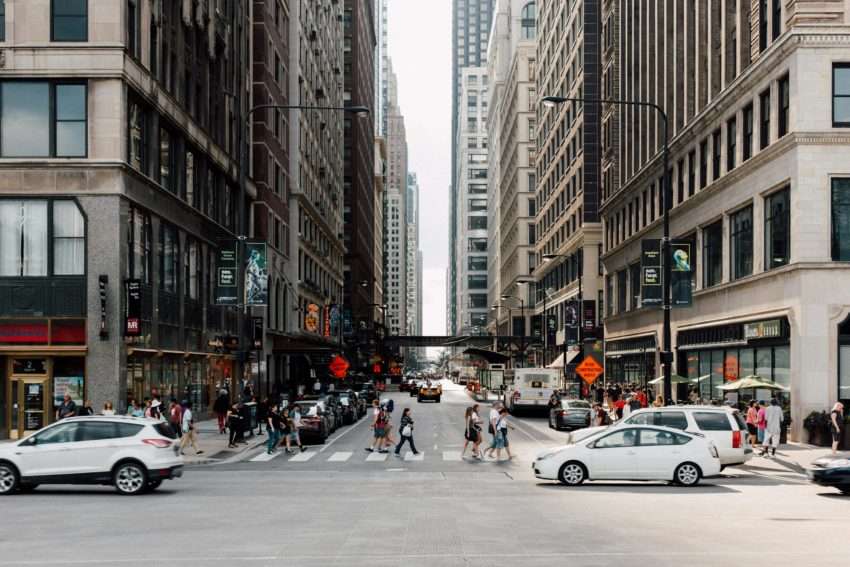
Pedestrian fatalities remain one of the most pressing and under-discussed issues on America’s roads. According to the National Highway Traffic Safety Administration (NHTSA), 7,314 pedestrians were killed in traffic crashes in 2023, accounting for nearly 18% of all 40,901 roadway deaths nationwide. Another 67,850 pedestrians were injured, representing 2.9% of the 2.42 million crash injuries reported last year.
The new analysis from Siegfried & Jensen underscores that while much of the public conversation centers on driver fatalities, the dangers faced by people walking in U.S. cities and suburbs demand urgent attention. The findings reveal not only where pedestrians are at risk, but also when fatalities peak, who is most likely to be struck, and what factors drive these grim statistics.
The States Falling Short
When measuring sheer numbers, it is no surprise that the most populous states also carry the heaviest pedestrian tolls. California reported 1,104 pedestrian deaths, Texas recorded 800, and Florida followed with 751. Together, these three states represented more than one-third of the national pedestrian death total.
But population size is only part of the story. On a per capita basis, New Mexico led the nation with a staggering 4.93 pedestrian deaths per 100,000 residents. Arizona (3.57), South Carolina (3.41), Florida (3.21), and Nevada (3.18) rounded out the top five. These states share characteristics such as sprawling car-centric development, high-speed arterial roads, and limited infrastructure that accommodates walkers.
Meanwhile, New York, with one of the largest pedestrian populations in the U.S., reported relatively lower fatality totals. Experts point to the city’s dense transit system, slower vehicle speeds, and stronger pedestrian protections as evidence that infrastructure choices, not population alone, determine safety outcomes.
The Seasonal Spike
Another striking trend uncovered in the data is the timing of pedestrian deaths. Fatalities do not peak during summer months, when more people are outside walking. Instead, the fall and early winter months prove most deadly.
-
October: 712 deaths
-
November: 733 deaths
-
December: 741 deaths
Nearly 30% of all pedestrian fatalities occurred between October and December, a period marked by shorter daylight hours, heavier holiday traffic, and more evening social activity.
The numbers suggest that visibility is a more important factor than weather. Poor lighting, early sunsets, and increased nighttime activity create conditions where pedestrians are more vulnerable to being struck. Experts argue that states should prioritize improved lighting, reflective crosswalks, and targeted seasonal safety campaigns leading into the holiday season.
Demographic Breakdown
The data also challenges stereotypes about who is most at risk.
-
By Gender: Men accounted for more than 70% of pedestrian deaths in 2023, with 5,148 male fatalities compared to 2,126 female fatalities. This disparity is linked to riskier behaviors, such as walking late at night, crossing outside designated zones, and higher rates of alcohol use.
-
By Age: Adults between 25 and 64 years old made up 67% of fatalities. The single largest group was ages 35–44 (1,328 deaths), followed by 55–64 (1,273 deaths) and 25–34 (1,199 deaths). These numbers reveal that it is not children or seniors who are most at risk, but middle-aged adults in the midst of their working and commuting years.
-
By Alcohol Use: A particularly alarming finding is that 28.8% of pedestrians killed were legally intoxicated at the time of their crash, compared to just 17% of drivers involved in those same incidents. This flips the conventional narrative and highlights the dangers of “drunk walking,” a risk rarely emphasized in public safety campaigns.
The First Harmful Event
Another way the data breaks down fatalities is by “first harmful event,” or the initial point of impact. In 2023:
-
1,489 deaths resulted from collisions with moving vehicles.
-
740 deaths involved pedestrians as the initial point of impact.
-
231 deaths involved pedalcyclists.
-
Fixed-object collisions, such as with trees (163 deaths) or curbs (150 deaths), also claimed hundreds of lives.
These findings highlight how a mix of driver behavior, road design, and pedestrian vulnerability combine to produce deadly outcomes.
A Public Health Imperative
The evidence is clear: pedestrian deaths are not random accidents but the result of preventable factors—high speeds, poor visibility, inadequate infrastructure, and risky behavior. The report calls for:
-
Expanding crosswalk visibility and lighting, especially in high-traffic corridors.
-
Lowering urban speed limits and enforcing them with cameras and patrols.
-
Addressing alcohol-related risks not just among drivers but among pedestrians themselves.
-
Creating tailored awareness campaigns targeting men and middle-aged adults, the groups most frequently affected.
“Every one of these fatalities represents a life cut short, a family devastated, and a preventable tragedy,” the authors conclude. “Improving pedestrian safety requires more than words; it requires redesigning roads, reshaping policies, and rethinking public awareness campaigns.”